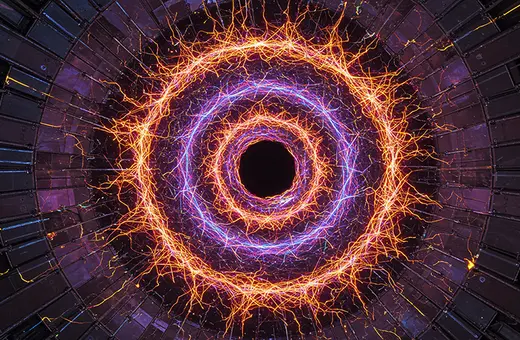Science's current best theory of reality, low-energy quantum gravity, takes the form of an effective field theory – one that is only valid up until a certain limit. Physics takes it as gospel that this breakdown occurs at the Planck Scale, but as theoretical philosopher Caspar A. Jacobs argues this is a mistake. Many have assumed that not only the same methods that took us from general relativity to low-energy quantum gravity will also take us to a grander theory, but also that this grander theory will cut up reality in ultimate units of the Planck constant. Unfortunately, given that this breakdown and the Planck scale lie far outside of our range of observable energies, we cannot say where our theories fail to match an unknown reality.
It is well-known that our two most fundamental theories in physics—quantum field theory and general relativity—are irreconcilable. It is perhaps less well-known that this is not the case in every circumstance. For systems with small energies it is possible to combine quantum field theory and general relativity into a theory of “low-energy quantum gravity.” This theory has real-world applications in astrophysics and cosmology. This is not yet a theory of everything, however, because at large energy scales this theory breaks down. When we try to use the low-energy theory at these scales, its predictions tend to unphysical infinities. It is therefore more accurate to think of this as a theory of everything-at-relatively-small-energy-scales. The question is: at what energy scale does this theory start to diverge from reality?
___
We cannot precisely predict when our theory fails to match a currently unobservable reality, because these predictions rely on assumptions about what that reality is like.
___
The standard answer is that breakdown happens at the Planck scale: energies of around 1019 GeV. For comparison, the maximum energies achieved at CERN are of the order of 104 GeV. To put that in perspective, the ratio between those energies is larger than that of the size a single atom to the planet Jupiter! There is currently no possible experiment that can empirically access those scales. In an encyclopedia article, Weinstein and Rickles (2024) write that it is “almost Gospel” that our current best theories break down at the Planck scale. But what is so special about the Planck scale? It turns out that the “Gospel” is a mere heuristic. We cannot precisely predict when our theory fails to match a currently unobservable reality, because these predictions rely on assumptions about what that reality is like.
SUGGESTED VIEWING The future of particle physics With Harry Cliff
To understand why, we need to understand the Planck scale. This is a set of units first defined by Max Planck in 1899. Generally, the units we use to measure quantities like length or mass are quite arbitrary. There are practical reasons to use the kilometer or the mile, but Nature does not care which one you choose. Planck wasn’t happy with this arbitrariness and developed a universal system of units. The trick was to look at the constants of nature, in particular G (the gravitational constant), c (the speed of light), and h (Planck’s own quantum constant). These constants are measured differently, from m/s for the speed of light to kg-1⋅m3⋅s-2 for the gravitational constant. But Planck realized that there is only one way to combine those constants in such a way that the result is measured in units of length:
![]()






















Join the conversation